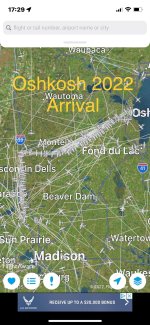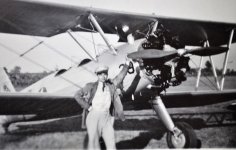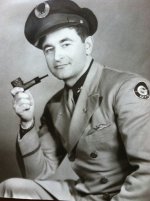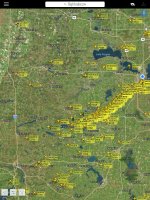Newbe at OSH
Just like your cross country during pilot training this will take practice and planning. Plan your route to and from Oshkosh. Fly the first segment, get fuel and return. Then fly the first leg, get fuel and fly the second; spend the night and go home. Plan on flying into busy airports. After each leg CRITICALLY critique how the flight went. What was your fuel burn? Did you land with more or less fuel? How was the weather? Did you navigate to your checkpoints accurately and on time? What would you have done differently?
Young pilots were flying P-38s, P-51s and other aircraft to England and then over Germany with less time than you have. You CAN do this, spend the next eight weeks getting ready.
All the above has been good advice which is what you need. Talk to
ANYONE who has been there before. This forum is a good source of information and, as you have seen, have varied from very discouraging to very encouraging. Only
you will know if you are ready.
Random thoughts:
Have a copy of the NOTAM on your kneeboard. Take out the pages you don't need and highlight runway patterns and frequencies. The "conga line" is a reference to the line of airplanes coming from the Southwest to get into position to land. That is the "Fisk Arrival" but starts well before that. Last year they were lined up to Portage! Once you are approaching the field, you will be directed to either 18/36 or 9/27. The Winds might be favoring one runway but you will be directed to another.

You should practice some downwind landings sometime as that seems to be where people get in trouble: quartering tailwind landing on 36. Going faster than your usual landing speed can be disorienting. Skill with spot landing would be a good idea: "Land on the purple dot" means get as close to the purple dot on the runway as possible as you touch down. You should be comfortable with LEFT
and RIGHT base-to-final turns. You should be comfortable with a busy airport. You should be good at
LISTENING to the radio and following instructions. At OSH you RARELY have to talk to anyone but the instructions you are given are crucial to getting on the ground safely. You will be known as "the red and white low wing" (or whatever you look like) and will maintain that identification after you "rock your wings" to confirm that is who the controller is looking at. They will not use your N number.
Going mid week can sometimes be better than trying to get there at the beginning of the week as far as traffic is concerned. Find out when the "mass arrivals" are; this year the C 170's are coming in a group but there are the usual Cirrus (becoming more numerous), Bonanzas and Mooneys. Avoid those days (or times) and avoid coming in AFTER they arrive as
EVERYone will be wanting to come in. Avoid coming in after a major weather event (which can last for days) as, as soon as the weather breaks, everyone will be coming in.
Once you are established on the Fisk Arrival procedure, be ready for ANYTHING! I used to think all pilots are pretty smart and courteous. I was wrong. Just be ready to adjust what you are doing for the current situation.
Once you have landed, you might hear "Exit immediately into the grass" which means there is likely someone behind you that needs the space on the runway you are occupying. Miss the runway light and go off the runway into the grass. That will eventually take you to a hard surface; then "follow the EAA flaggers" in orange vests that will be there to help show you where to go. Have your placard
ready that tells them where you want to go (see the NOTAM)
What are you going to do once you get there? Camping with your airplane is always available. Hotel and dorm rooms were reserved 2-3 years ago. You might be lucky to enough to find one.
BRING TIEDOWNS.
Can you do this? Yes. Again, it is dependent on how confident you feel about your flying abilities. You need to know your airplane. One should ALWAYS be comfortable with slow flight but it will be critical to have those skills at OSH. Do a bunch of that. RV's fly well below 90kts but you might be required to go slower than that. If you are following a J-3 in line, they can't
DO 90 kts.

Don't push yourself. If not this year, next year will be just fine!
Let us know your progress and thinking. You will get a ton of advice here!






